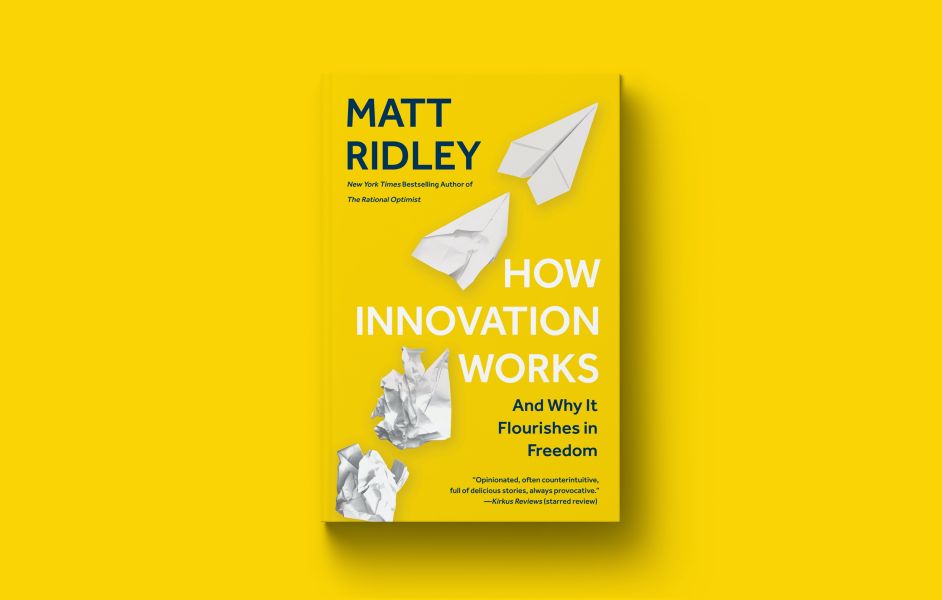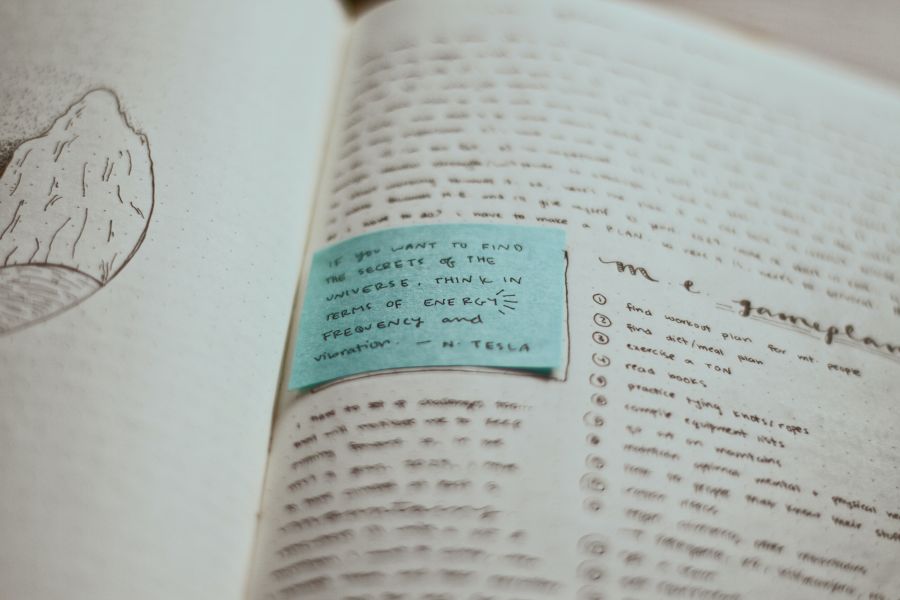高中英语获奖教案1
Good afternoon, everyone. It’s my great pleasure to be here sharing my lesson with you. The content is Senior High English Module 1 Unit 2 Modern heroes. I’ll be ready to begin this lesson from six parts, that is, analysis of the teaching material, analysis of the Students, teaching aims, teaching important and difficult points, teaching methods and teaching procedures. First of all, let me talk about the teaching material.
Part 1 Analysis of the teaching material:
Unit 2 is about different heroes, in which most students are interested. By studying this unit, we’ll enable the students to know how to be a hero and develop their interest in heroes. Lesson 1 plays an important part in the English teaching in this unit. If the students can learn it well, it will be helpful to make the students learn the rest of this unit. This lesson is about a national hero——Yang Liwei who is famous for the first astronaut of China, which, I think, the students are familiar with. There are many new words and expressions related to space flight appearing in the reading material, too.
Part 2 Analysis of the Students:
Aged 15-16 years, the students in Senior1 think actively, respond swiftly and have the courage to express their thoughts and ideas. Just entering high school and lacking in the ability of active learning, however, they haven’t formed a good habit of learning English. When it comes toreading, they haven’t master how to use extensive and intensive reading skills and the abilities of summary and induction as well. In a word, students haven’t mastered the reading strategies. On the other hand, after a certain time of training, they’ve mastered some reading skills, such as group work, using the culture and background knowledge etc.
Part 3 Teaching aims:
According to the new standard curriculum and the syllabus (新课程标准和教学大纲), after studying the teaching material and analyzing the rule of children’s growing of mind, I think the teaching aims are the followings:
Knowledge goals:
●To learn some words and expressions related to space flight appearing in the reading material.
Ability goals:
●To improve students’ basic ability of listening, speaking and reading.
●To practise extensive reading in order to understand the main idea of each paragraph and guess the meaning of new words from the context.
Emotional goals:
●To motivate students’ interest in space exploration of China.
●To help student to learn to cooperate with each other.
Now, let’s come to the Important and the Difficult points.
Part 4 Teaching Important and Difficult points:
The important and difficult points of this period lie in: To achieve the teaching aims better and make the student respond actively to complete the tasks. But how to? According to the analysis of the teaching material and the students’ learning background, I will use the following methods.
Part 5 Teaching Methods:
In my opinion, the main instructional aims of learning English in the High School is to develop the students’ abilities of listening, speaking, reading, writing and their good sense of the English language. So in this lesson I’ll mainly use the “communicative approach” to mobilize the enthusiasm of the students to actively participate in class activities and fulfill the tasks of teaching through teacher-student interaction and group discussion.
At the same time, I’ll also use “task-based approach” in my teaching, which offers the students an opportunity to complete the tasks in which students use language to achieve a specific outcome. I’ll make use of the modern electricity teaching equipment and all kinds of teaching means, which can develop the Ss creativity in learning English.
Part 6 Teaching procedures
Step 1 Lead-in.
Show the students a piece of video: the launch of Shenzhou V
Then ask the students the following questions:
Do you know who was in the spaceship?(Show the picture of Yang Liwei)
What do you know about him? (Show the profile of Yang Liwei )
How do you feel about him?
How did you feel about China’s first manned space flight?
Purpose of my design: This activity can stimulate the interest of students, which naturally leads to the topic of this period.
Step 2 Fast readingAsk the students to skim the passage to complete the task. ( Show the students the exercise on the screen)
Task 1: Divide the class into two groups: boys and girls. Ask them to read the article quickly and the boys circle all the words related to a spaceship’s movement while the girls circle all the words related to Yang Liwei’s movement in the spaceship.
Then ask the boys to judge whether the girls’ answers are right or wrong and the girls do the same.
Purpose of my design: Enable students to understand the given material better using a useful reading skills. Dividing the class into two groups--boys and girls, will create a competition between the boys and girls, which, of cause , makes the studens more actively participate in the class activities.
Step 3 Detailed reading
Task 2: The students have got some basic understanding of the passage after Task 1.This time show the boy students five questions to answer, requiring them to conduct a second reading and get a further understanding of the passage . At the same time ask the girl students to find out the headings of the paragraphs and match them together.
Boys:
1. How did Yang Liwei feel during the flight? How did he feel afterwards?
2. What did Yang Liwei do during the Shenzhou V’s seventh circle of the earth?
3. How many circles did the spaceship complete while Yang Liwei was sleeping?
4. What were helicopters doing as Yang Liwei returned to the earth’s atmosphere?
5. What did Yang Liwei do when he came out of the spaceship?
Girls:
Para.1 Introduction
Para.2 An exciting lift-off
Para.3 During the flight
Para.4 International good wishes
Para.5 Astronaut lands safely
Para.6 Welcome home
Then ask the boys to judge whether the girls’ answers are right or wrong and the girls do the same.
Purpose of my design: The task makes students more familiar with the passage, train their reading speed and reading strategies and develop the students’ capacity of induction.
Step 4 Post reading
(Show some sentences with pictures to students, then ask them to guess the meaning of some words or phrases. )
Task 3: Ask the students to guess the meanings of some words and phrases together with some pictures. Then ask the students to complete the following exercise shown on the screen, using some words and expressions in this passage.
China’s first spaceship at 9 a.m.,October 15,2003. The first Chinese ,Yang Liwei said, “When the spaceship was , I could really feel the high . When the spaceship from the rocket, I suddenly got a feeling of the sky.” During the 21-hour space , the spaceship the earth 14 times. When the space was the earth for the seventh time, Yang Liwei showed the
of China and the UN, the wishes of Chinese to space peacefully. Yang landed . The spaceship was red when it came into the earth’s . The ship was shaking when it let out its . At the same time were ready to save Yang. Yang climbed out of the spaceship, smiled and to the crowds waiting for him.
Purpose of my design: Present some key words and phrases appearing in the passage, and fill in the blanks to increase the students’ ability of language use. Then ask the students to report the answers one by one. This task can test the students’ learning effects.
Step 5 Free discussion
Task 4: Ask the students to Work in pairs. Imagine one is Yang Liwei and the other is a reporter from CCTV. Make up an interview between them.
Example:
Reporter: When did the spaceship lift off?
Yang: It lifted off at 9 a.m. on October 15th, 2003.
R: What did you eat in space?
Y:…...
Purpose of my design: Most students can take their parts in the activities, especially for the Ss who have trouble in English study. In the group activities, they can speak a little English. Without doubt, this will encourage them to speak English. In fact, it is a kind of demand of human being. “Task-based” method is used here to develop the students’ ability of communication and also their ability of co-operation will be well trained.。
Step 6: Homework.
1.What do you think of Yang Liwei? Please write 5 or 6 sentences.
2. Read the article space heroes on page 32
Purpose of my design: I think homework is so important that the students should practise English as much as they can in class or after class. It is necessary for the students to do some exercises after class to master the knowledge they learned, which is an extension of the previous lesson.
高中英语获奖教案2
一、说教材
(一)教材内容及分析
我说课的内容是外研版《英语》(新标准)高中第一册(必修1)Module 2 My New Teachers 的Reading and Vocabulary的短文阅读。本模块以My New Teachers 为话题,介绍了具有不同教学风格和个性特征的教师,旨在通过模块的教学使学生学会描述教师及校园生活,并能运用所学词汇、句型来表达自己的喜好,同时通过学习制定好教师的标准使师生之间相互了解。
Introduction 部分已主要介绍表示个性特征的形容词,并通过听力活动对描述教师风格的陈述进行判断;Reading and Vocabulary部分要求学生利用提供的词汇阅读三篇短文,了解不同教师的教学风格。训练学生围绕学校生活对教师个性特征、教学风格进行由浅入深的描写。
(二)教学目标
根据《新课标》总目标的描述,结合本课的内容,我把本节课的教学目标系统化,分别是:语言知识,能力目标,情感目标,文化意识,和学习策略。
1.语言知识目标
掌握并能运用下列词汇:
tient,serious,intelligent,energetic,amusing,nervous,shy,strict,impression,respect,organise,appreciate,admit…
2.语言技能目标
运用表示个性特征的词汇描述熟悉的人物;理解介绍教师风格的短文,了解不同教师的个性特征和教学风格,获取信息并掌握和理解作者的观点;简单描写自己身边的老师。
3.学习策略目标
搜集和运用所学词汇、短语;对介绍教学风格的材料进行理解、分析、比较和总结;体现自主合作探究相结合。
4.文化意识和情感态度目标
加深对老师的了解和热爱, 既发挥学习主动性也配合教师的教学工作,实现感情交流, 使师生关系更加融洽。
(三)教学重点与难点
重点:围绕学校生活对教师个性特征、教学风格进行描写。
难点:了解不同教师的教学风格,并运用于实际。
二、说学情
在教学过程中,对学情的了解是教师因材施教的关键。高中的学生注意力有一定的稳定性,观察能力很强,具有一定的目的性,系统性和全面性,已经初步实现从具体思维向抽象思维的过渡。他们喜欢富有个性化的教学设计,喜欢接受新鲜事物。同时,自我意识增强,拥有强烈的主观能动性。尤其是海南省新课改实施以后,他们更是拥有很强烈的自我展现意识与欲望,不但在乎别人对自己的评价,更渴望得到别人的关注和赞赏。他们已具有了一定的自主合作和探究的能力,具有了一定的英语语言知识和英语应用的能力,具备了基本的英语思考和英语表达的基本技能。
因此,设计这节课时,我充分考虑到学生的主体性,把自己作为与学生一起探讨的一员,以亦师亦友的身份走进他们,以基础的语言启发他们,以轻松的话题开始,以愉快的交流展开合作,充分创造机会让同学们都拥有成功的喜悦,在和谐的氛围中探究并完成教学任务。
三、说教学方法
新课程提倡运用任务型教学途径,围绕核心问题,设定小任务;围绕文章内容,尽可能提供训练学生技能的机会;开展自主性学习的课堂活动,强调合作探究与独立思考相结合。任务型教学:任务型教学强调语言学习应该是在“做中学”“用中学”。任务设计应该贴近学习者的生活,才能激发学习者的背景知识,激发他们的学习的兴趣,语言才能在经意中习得(incidental acquisition).
这节课本人主要采用任务型教学法和活动教学法,借助多媒体展开教学活动。通过运用阅读技巧,如查读等方式提高阅读能力,从而使学生掌握阅读策略,同时围绕文章设计多种语言活动,以自主合作等多种形式,引导学生根据不同的学习任务尝试使用不同的学习策略,使良好的学习习惯得以培养,自主学习和合作得以发展,交际能力和综合运用能力得以提高。
四、说学法
通过本课教学,我将主要培养学生掌握以下学习方法:
1.参与式学习法:培养他们从练中学,在学中用,通过设置符合学生知识水平的活动让学生参与、体验、实践,并从中品味在活动中的乐趣。
2.知识迁移法:培养学生善于运用所学知识来分析和解决问题的能力。
3.合作学习法:通过小组形式完成多种活动,培养探究和合作意识与能力。
五、说教学过程
Step1. Lead-in(Brainstorming)
让学生分成两大组,男生一组,女生一组,进行竞赛,使用学过的形容词描述老师,说出最多形容词的小组获胜。
T: What shall we talk about today?
S: My New Teachers.
T: You have already been students for about 9 years. During the 9 years, you must have met different teachers.
Could you use some adjectives to describe these teachers?
S: Yes.
T: Let’s play a game. I’ll divide the class into two parts. One part is boys, the other is girls. Let’s see which group gets more words.
第一环节:导入与复习。这部分起到复习旧知导入新知的作用。主要任务是使用学过的形容词描述老师,既复习了上节课涉及到的词汇,又很自然地进入到今天主要谈论的话题。为避免学生对词汇复习感到枯燥无味,于是采用游戏形式Brainstorming完成,程度地调动了学生的学习兴趣,所以这部分也属于激趣阶段。Step2: Pre-reading
1.把课文中的三位教师的图片扫描到电脑上展示给学生看,在课件中通过呈现照片使学生对课文中的三位老师产生亲切感,让学生描述着三位老师,并根据图片猜测三位老师的个性和风格,尽可能用学过的词汇表达自己对三位教师的第一印象。
2.让学生带着Reading Activity1中的两个问题,进行听力训练,使学生初步感知课文内容,训练学生的听力扑捉能力,为进一步的阅读理解打下基础。
T: Talking about teachers is an interesting topic for students all the time.
Now, we’ll read three compositions about three teachers written by their students. And we’ll know more about them. Let’s know them first.
S: Mrs Li, Mr Wu, Mrs Chen.
T: First, let’s listen to the tape and try your best to answer the two questions.
1. Which teachers do students like a lot?
2. Who is a very good teacher but is serious and strict?
Step3: While-reading
1.总体阅读文章,只要求理解,核对听力中的两个问题的答案。
2.每个学生一边阅读一边记下不懂的地方,然后两人一组,互相帮助解决语言形式引起的理解问题,如,生词或短语,完成课本上的Ativity2&3的词汇练习。
3.再一次阅读,回答课文中Ativity4的问题,培养查读技能。
(1) Which paragraphs tell us what the teachers look like?
(2) What subjects does each teacher teach?
(3) Who is the most popular teacher?
(4) Who is the kindest teacher?
(5) Which teacher is students most afraid of?
(6) Which teachers explain things clearly?
4.全班分为三大组,每一组分别对课文进行小结,完成表格。这一活动培养学生的合作精神和总结能力。利用表格进行读书摘记,使课文内容化繁为简,思路清晰,易于对比三位老师的个性特征和教学风格。
Name
Subject
Appearance
Personality
Examples
Mrs Li
Mrs Chen
Mr Wu
Step4.Post-reading
1.让学生两人一组,讨论下列问题:
Which teachers do you like best, Mrs Li, Mrs Chen or Mr Wu? Why?
2.呈现学生身边任课教师的真实照片,让学生运用所学词句描述自己熟悉的老师特征。让学生四人一小组讨论,然后写下要点进行汇报。
这一环节属于学生语言能力的拓展、知识的灵活运用。通过呈现学生身边任课教师的真实照片,让学生运用所学词句描述自己熟悉的老师特征这一活动联系了学生的真实生活,学生比较感兴趣,每个学生都有话要说。通过这一活动,使学生把所学语言运用于实践当中。
通过以上各个环节的设计与实施,从多方面强化语言技能的训练,全面培养学生的综合英语能力。
Step 5. Homework:
Write a composition about your favorite teacher.
六.板书设计
1. Words describing your teacher:
Team1(Girls) Team2(Boys)
Patien kind
Lively popular
... …
2.利用多媒体课件展示一些图片、阅读理解问题和读书摘记表格。
高中英语获奖教案3
Lesson Plan Interpretation
NSEFC Book1 Unit3 Travel Journal
Hello, everyone. It’s an honor for me to stand here and interpret my lesson. The lesson plan I am going to talk about is from NSEFC Book 1 Unit 3 Travel Journal. I’ll explain how to teach and why do so from the following 5 aspects: the theoretical basis, understanding of the teaching material, teaching methods and studying ways, teaching procedure, blackboard design.
Ⅰ. The theoretical basis
First, I’d like to show my theoretical basis--schema theory and top-down model (Goodman, 1971). Journey down the Mekong is a reading course. According to schema theory, reading comprehension is an interactive process between the reader’s background knowledge and the text (Carrel and Eisterhold, 1983), or between the new information and the old knowledge store (Anderson and Pearson, 1984). So in order to improve the students’ reading speed and reading comprehension, language teachers should try to activate the Ss’ old knowledge store and add more relevant background knowledge before they get the students to read. According to the top-down model, general idea of the text will be got first, and then come the details.
II. Understanding of the teaching material
My understanding of the teaching material includes 3 parts: the status and the function, teaching objectives, the important and difficult points.
At the beginning, let’s focus on the first part. Journey down the Mekong is a piece of travel journal written by Wang Kun. It’s mainly about Wang Kun and his sister’s dream of taking a great bike trip down the Mekong River, their preparation for the trip and some more details of the Mekong River. General speaking, it is not difficult for the students to understand the text, but there are some new phrases and sentences that may be a little bit difficult. So before the students’ first reading, I will explain the new words and phrases briefly and after reading the whole passage, I will embody the usage of the news words and phrases, and get the student understand the difficult sentences. As it is a piece of journal, besides learning the new words and phrases, students can get the general idea of how to write a journal.
That’s all for the first part, now let’s move to the second part. According to the teaching material and the new curriculum of English, in order to fulfill the learning task of this lesson, I establish the following objectives:
a) Knowledge objectives
By the end of the lesson, Ss will have a better understanding of the meaning and structure of the text. Then Ss will grasp some useful words and expressions such as determined, make up one’s mind, give in, be fond of …, care about…, stubborn, etc.
b) Ability objectives
Actually students should be encouraged to do speed reading in the first period of reading lesson. But the students in my class are lack of independent reading ability. In this class, I will encourage and help them to read, think and find out information by themselves most time. Since the main objective of reading course is to improve the Ss’ reading ability, I’ll train their ability of identifying the general idea in the fast reading. And in intensive reading their ability of information-gathering and summarizing is developed. And the whole class is for Ss to develop their reading skills as scanning, skimming, information-gathering, summarizing and guessing the new words from the text.
c) Moral objectives
Though Journey down the Mekong is mainly about the trip down the river, it also talks about the scenery and life along the river. So before learning the text, we will have a short discussion about the importance of the river. I want the Ss to have the awareness of protecting the river and protecting our environment.
Well, so much for the teaching objectives, let's come to deal with the third part: the important points and the difficult points. According to the national curriculum of English and language learning theory, when teaching reading, we should encourage the Ss to do speed reading for the first time, that’s to say, we should encourage our Ss to read as fast as they can when they do the first reading. So much emphasis should be put on reading skills and reading comprehension as well. So the important points are that how to make Ss grasp the new words and phrases and how to improve their reading skills as scanning, skimming, information-gathering and summarizing. As to the difficult points, they are the same as the important ones.
III. Teaching methods and studying ways
That’s all for my understanding of the teaching material. Now let’s focus on the ways of teaching and learning.
Generally speaking, I adopt task-based language teaching and communicative approach in my class. As for learning, Ss will learn through independent reading, discussing and cooperating.
I will use computer and blackboard as my teaching aids.
Ⅳ. Teaching procedureHere comes the most important part, the teaching procedure. It includes 5 steps: Step I: Lead-in and pre-reading, Step II: While-reading, Step III: Consolidation, Step IV: Post-reading, Step V: Homework.
Step I: Lead-in and pre-reading (7mins)
Now let’s come to the first step. There are three activities in this step and I will spend 7mins on them.
In activity one, I will ask Ss two questions "Do you know some great rivers in China?" and "Why they are great?” Here, as the Ss get familiar with the Chinese great rivers, I choose to ask them some great rivers in China. And the answer to the second question can lead in the next activity--brainstorming.
In activity two, I will ask the Ss to discuss in pairs and answer the question "How do people who live along a river use it?” My purpose of this activity is to remind the Ss the importance of the river, thus stimulate the Ss' awareness of protecting the rivers.
In the last activity, I will show the Ss a picture of the Mekong River and ask them to list the countries that it flows through. This activity leads in the while-reading.
Step II: While-reading (21mins)
While-reading is the main part and it will take 21mins. Here I adopt the top-down reading model. This step is divided into 2 parts: fast reading and careful reading. Before reading, I will ask the Ss to predict what will talk in the text according to the title. It can exert the Ss' imagination.
1) Fast reading
During fast reading, I will ask the Ss to reading the whole passage quickly and get the main idea of each paragraph. Usually, the main idea of each paragraph is the first sentence or the last sentence, but this text is not. So the main idea of each paragraph will be matched because the Ss are lack of the skill of summarizing the main idea by themselves.
2) Careful reading
After getting the general idea of each Para., I will deal with the details Para. by Para..
In paragraph one, I will ask the Ss to read quickly and do the exercises T or F. And if it is F, I will ask them to correct it. This exercise can help the Ss get the key information of the first paragraph in a short time and can deepen the Ss’ understanding of the first paragraph.
In paragraph two, I will ask Ss one question “Is it a difficult journey to cycle along the Mekong? Why?” This can help the Ss develop their ability of summarizing. If the Ss can’t answer the question briefly, I will encourage them to find the key sentences and try to join them together.
And in the last paragraph, I will ask Ss two questions “How does the water of Mekong River change?” and “What can you see when you travel along the Mekong River?” Both questions are required to answer in keys word. In order to lower the difficulty of the questions, I will show them the examples. After that, I will present some pictures to deepen the Ss’ impression on the new words. And these two questions can help the Ss gain a deeper understanding on the Mekong River.
Step III: Consolidation (6mins)
After dealing with the detailed information of each paragraph, I will ask the Ss to read the whole passage again and answer two questions to consolidate what they’ve learnt. It will take 6 minutes. The two questions are “Where is the source of the Mekong River and which sea does it enter?” and “How do Wang Kun and Wang Wei prepare for the trip?” It is easy for the Ss to find the answer to the first question in the text. As to the second question, it may be a little difficult, so I will list some tips for the Ss to find the answer more easily.
Step IV: Post-reading (10mins)
That’s all for the while-reading. Now let’s move to the fourth step. In this step, I will design two activities and I will spend 10 minutes on them.
The first activity is filling in the blanks. In this activity, Ss are required to find the different attitudes of Wang Kun and Wang Wei to the trip, and then the teacher will express her attitude to this trip. After demonstrating, Ss are encouraged to express their attitudes. It can help the Ss train their ability of information-gathering and expression.
The second activity is thinking. In this activity, I will ask the Ss to discuss in groups of four and try to use some words to describe the characteristics of Wang Kun and Wang Wei according to their attitudes. It is really difficult, but it can not only train their ability of analysis and comprehension, but also cultivate their spirit of cooperation
Step V: Homework (1min)
Finally it comes to the homework. Ss are required to review the learnt lesson and underline the useful words and phrases in the text. This one is for them to consolidate what they’ve learnt and make preparation for the next lesson—Learning about the Language..
Ⅴ. Blackboard design
On the top, there is the title of this lesson. On the left, it lists some important roles that the river plays. On the right, there are some useful words and expressions.
That’s all for my interpretation. Thank you for your att
高中英语获奖教案4
Good evening ,dear teacher, I'm pleased to have the chance to show you my teaching opinions. The topic I will talk about is from Book 4 unit 1 women of achievement . It consists of 6 parts.
Part I. The analysis of teaching material
First is my analysis of teaching material, this unit will talk about a few great women, and the article will focus on Jane Goodall, a great woman, as an animal lover, she tried her best to call for protection of wildlife. So we can see the article aims to enhance the students' awareness of wildlife protection.
Part II. Teaching aims:
According to the new standard curriculum and syllabus , and study the teaching material , I think the teaching aims are as follows:
1. Knowledge aims: (firstly) to master the new words, phrases ,and useful expressions
2. Ability aims: secondly to develop the ss' reading skills such as : listening , speaking , Reading and writing .
3. Moral aims: thirdly by learning the passage, let the students realize that everyone should have the responsibility to protect the wildlife.
Part III. Teaching and learning methods:
In order to achieve the teaching aims , I will use the task-based and students-centered methods , and the teacher acts as a director. I will also use encouraging words such as : have a try , a good job, excellent, and so on and make full use of modern equipments.
Part IV . Difficult and important points :
Now let's come to difficult and important points , It's about the great women, so we can learn a lot of good qualities of Jane Goodall, and the difficult point is to develop the students reading skills and communicate with each other fluently.
Part V. Teaching procedures:
Next part is the most important part, teaching procedures.
Step 1. Leading-in
At first, I will show some pictures about great women, and ask/encourage the students to guess who they are , and what makes them great. In the last picture , I will show some pictures about her work in the forest , According to the pictures, what did she do ? In this way , we will enter the passage.
Step 2.skimming.
43minutes to get the main idea of the passage, this step will train the students' fast reading ability. And grasp the key information of the passage.
Step 3 . Scanning
According to the main idea, we know Jane Goodall spent 40 years in the forest, .
1. Why did she go to Africa ?
2. What did she do there?
3. What did she achieve ?
According to these questions and a table , to complete the scanning .
Step 4 language points:
While they are reading , they may meet some new words , phrases, or even sentences, first they can underline it and then discuss it with your partner. And I will also show some useful expressions. Such as:
1. Worthwhile /worthy /worth
2.only after ...... Was she allowed ....
Step 5. Discussion .
Right now we know Jane Goodall devoted her most time to research, now what made her great ? And what did you learn from her ? 4 minutes to discuss in groups , and then some will present their opinions to us. This step will develop the students' ability of cooperation , communication and expression.
Step 6. Homework .
Finally , it is the homework , write a composition , try to introduce Jane Goodall , what did you learn from her? You can use words and phrases as many as you can you have learned in your passage.
Step 7 . The blackboard design.
A good design will have a better understanding. So here is the title , and on the left are the key words ,or phrases, on the right are some sentences.
Now a clear design will help them understand better.
So much for my teaching ideas. Thank you for your attention.
高中英语获奖教案5
一. 总述
课题:运动与奥林匹克(高一上册第八单元)
内容:热身,听力,口语
课型:听说课
二. 说教材
1. 教材的地位和作用
本单元教材在本册书中有极其重要的地位,在学生整体的知识结构中也有着不可或缺的作品:早在建国初期,体育英语显示了他重要的作用(乒乓外交);在现在,经济发展和SARS的入侵,人人注重体育锻炼,身体健康成为人们茶余饭后的重要话题(全民健身);在未来,北京举办2008奥运会,(志愿者)。
2. 教材重点的确立
重点为-----热身 热身一向是容易被忽略的部分,但我却有着不同的观点①引入本单元知识,带学生进入一个丰富多彩的体育世界。②介绍有关体育的基础知识,激发学生对体育的兴趣方面也起着重要的作用。从而提高学生对本单元知识学习的兴趣③引入大量本单元有关体育的新单词,为后面听说读写个方面奠定良好的基础(配课件图--根基最重要)总之,是要通过以激活学生已有的相关背景知识,补充必要和新的背景知识,以启发学生对话题的思考,同时,还为学生归纳和总结已有的语言知识,并为其预测,了解和讨论话题做了铺垫。
3. 教材难点的确立
难点为----听力
听力历来都是英语学习者很难突破的瓶颈 原因:发音部位和技巧的不同;历史文化背景的不同;词汇量的限制;练习机会较少
本课:体育赛事新闻 原因:语速较快;个人兴趣影响(背景知识的限制)
4. 通过本课教材要达到的教学目标(与新课标结合
文化意识:了解体育和奥运的基本文化知识
语言知识:掌握有关体育方面的大量单词及短语
能力策略:能从复杂的听力材料中快速的获取有效信息;灵活运用所学知识加强口语表达能力
情感态度:加强学生对体育知识以及体育锻炼的兴趣;通过介绍2008北京奥运的知识,培养其爱国主义情感二. 说教学
1. 学法的指导
以“我”为心,注重能力,积极参与,总结分析
以“我”为心:在学习中不要以教师为中心,要使学生真正成为学习的主体。在日常生活中练习英语的机会较少,课堂教学就成了向学生提供可理解性语言输入的一个重要渠道,如果在这的渠道中还只以教师为中心,放弃了自己的学习机会,则无法达到良好的学习效果。
注重能力:让学生注重能力的提高,而不仅仅是知识的记忆。目前很多英语课上教师讲得过多,学生练的太少;学生也没有从思想上认识到,英语应该是一门实践课,是一种“技能”的培养,而不是“知识”的获取。我们应该尽可能使学生的注意力转移到信息和沟通上,而不是使用语言的形式上。
积极参与:充分调动学生参与课堂活动的积极性,并尽可能多的为学生创造独立思考的机会。在教师的指引下,多设置课堂活动,让学生在活动中知道,外语是自己学会的,练会的,而不是老师交会的。
总结分析:培养学生在丰富多彩的课堂活动后,学会自己总结所得到东西,使其自己悟出其中的道理,并总结学习方法。是与新课标所提到的学生自我评价体系相结合的过程。着重评价学生的综合语言运用能力,以及在学习过程中表现出的情感,态度和价值观。作为教师应该帮助学生设立自我评价的平台,尽力将评价体系具体和量化。(话题:国际奥运委员会要来我校参观,会询问你一些关于我国的全民健身和申办奥运的情况。)
2. 教学方法的选择及运用
①情景教学法:由我国特级教师李吉林创造。指导教师在教学过程中为学生创造一个具体,生动,形象的学习环境,以激发学生的兴趣,产生一定的内心情感体验,促进对知识的理解,记忆,并受到思想情感的陶冶。
②愉快教学法:是教师在教学过程中充分利用学生的好奇,疑问,求美,成就的心理特点,从教材的实际和学生的知识水平出发。列举趣味性的事例,提出引人入胜的问题,以激发学生的兴趣,求知欲望,提高学习效率。以兴趣为突破口,化难为易。
③暗示教学法:又称启发式外语教学法。首先,要求教师要善于设置诱发学生学习潜力的外部环境,激发学生的动机。其次,适当的采用音乐,电影等艺术途径,特别是发挥声调,节奏,音乐的刺激与感染作用,加强教学的情感效果
自己使用:自己综合,补充完善-----两点一线,四个方面3.配合课件说明两点一线,四个方面的具体运用(重点的突破和难点的化解,以及学生活动的组织)
总原则:两点一线,四个方面
⑴ 两点:将课本的知识点与师生的兴趣点紧密结合
第一层面:着重使课本的知识点和学生的兴趣点结合起来。所有智力方面的工作都要依赖兴趣。只有充分调动学生的兴趣,才能培养学生自觉,主动学习英语的习惯。作为教师应该运用灵活的教学手段和方法,用兴趣的火花去点燃学生智慧的火焰。
第二层面:教师自己兴趣调动。言教不如身教,只有自己投入到教材中去,才能感染更多的学生。对与那些本身对体育感兴趣的学生,知趣相投,更容易投入到课堂中来。(体育生)对于那些本身对体育不太感兴趣的学生,要发挥教师本人和教学环境的感染力,去吸引他们投入到其中来。总之,教师全身心投入教材,是建立良好师生关系的必要条件,是调动学生学习兴趣的重要前提,也是教师传授知识的桥梁和润滑剂。
下面是结合课件展示我是如何集体将课堂内容的三个部分与兴趣点想结合的。
本课的知识第一部分为热身训练,这也是本节课的重点所在。我采取的是利用兴趣来突破重点。具体的方法是“两个游戏,解决难题”。
首先是让学生通过第一个游戏来进行自我测评即设计一些有关体育方面的选择,判断正误,以及问答题,每答对一道题就会得到相应的分数,然后根据最后的总分来判断自己对体育的了解到底有多少。从而让学生大量的了解有关体育和奥运的知识,当然在选题方面要简单并与学生的兴趣息息相关,比如北京申办奥运等。每道题都涉及到了一些本单元的新单词,在答题的过程中学生就掌握了相关单词,并激发了他们对体育和奥运的兴趣。通过第一个游戏我也基本的了解了班里每个学生对体育的兴趣水平(感染力),更加有利与用自己的兴趣去感染学生。
由于本单元的单词很多都是体育项目的名称,学生在记忆时有一定的困难,因此我设计了第二个游戏,以学生一些耳熟能详的体育明星为突破口,由此让学生记忆他们所从事的体育项目。这样就解决了一些新单词的引入问题。
通过两个游戏我即完成了热身部分的教学任务,也完成了对教学重点的突破。
本课的第二部分时听力,这一部分主要是提高学生在听力过程中捕捉有效信息的能力,由此能听懂体育新闻及体育赛事的比赛结果。
听力是英语学习中比较枯燥的部分,但也是本节课的难点,在课堂上是学生最容易忽视的部分。我依旧是通过调动学生兴趣的方法来解决这一难题的。具体的措施有两点:①加强对每段听力背景知识的介绍,寻找听力内容与学生兴趣的结合点。例如在听NBA比赛之前,我先让学生自己介绍他们喜欢的球队。在这一部分学生有很多话可说,但用英语表达就显的颇为牵强了,于是我介绍了一些知名球队的英语表达法并介绍了一些有关篮球的专业术语(盖帽,扣蓝等),从而提升了他们对NBA的兴趣,并扩展了知识和单词量,也在无形之中将本段听力的背景知识介绍给了学生。②加强听力技巧上的指导。让学生区别有效信息和干扰信息,尽力捕捉有效信息,例如听体育赛事的新闻要注重球队名称,比分输赢等。从而减少学生在听力过程中的盲目性。
通过听力背景知识的趣味性介绍和听力技巧上的指导,使学生在轻松愉快的气氛中,完成了听力部分的学习,并化解了本课的难点。
第三部分是口语练习。这一部分主要使学生能用所学的单词和句型通顺介绍自己喜爱的运动明星和运动。重点是让学生有话可说,有话能说。
有话可说主要是让学生找到自己感兴趣的话题。于是我以NBA明星迈克尔?乔丹为例,让学生能在自己最熟悉,最喜爱的明星身上找到共同话题,做到有话可说。但有话能说是对学生语言驾御能力的考验,在这一部分我是在学生零星的发言基础上,总结出对乔丹的介绍,并突出了其中的重点单词和句型,让学生在后面的发言中可以有所借鉴,使他们有话能说。总之,在本课内容的各个部分我都加强了学生兴趣点与课本知识点的结合,以兴趣为突破口来带动学生情绪,突破教学难点。并使学生整堂课都能被所学知识吸引,激发其对英语学习的兴趣,并且学生活动的组织也是始终贯穿在其中的,突出了课堂的主体是学生。
⑵ 一线:就是让体育和奥运的主线始终贯穿与课堂之上,听说读写都以运动和奥运为主轴。做到由景生情,以情带义(解释)。这样即突出了教材的连贯性,也创造了层层递进的条件,使学生对此方面的知识更系统,更完整,此外还有利于培养学生热爱运动和积极从事体育锻炼的热情。
⑶ 四个方面:听,说,读,写
从个体来看: 听、说、读、写是语言学习不可缺少的四个方面,每一个各体在教学的过程中都必须涉及到。所以在本课之中,我尽力使学生在四个方面都有所练习,但由于本课是一节听说课,那么在四个方面要有侧重,以听说为主,读写为辅。
听和说已经在前面有所介绍,以下主要介绍我是如何将读和写两个方面溶入我的课堂中的。阅读主要是体现在阅读听力的背景知识以及说话练习的示范性总结中。而写的方面我则布置成为了作业,让学生写一篇自己喜爱的运动明星的介绍。这既是对课堂所学知识的延伸,也弥补了课堂时间上的不足,可以让每个学生都能充分的得到练习。
从整体来看:听,说,读,写四个方面有是一个有机的整体,是相互关联,相互影响的。每一个部分都不可能是单独存在的,必将会涉及到其它的几个方面。在教学的过程中要突出更方面知识的连带性,使学生全面的提高语言水平,断不可只见树木,不见森林。
这就是我整体的说课过程,其中还有很多的缺点和不足,希望大家给与批评指正。谢谢!
三.说课件
1.课件制作原则:充分准备,合理选材,巧妙呈现,精心制作,正确把握
充分准备::
合理选材:选取材料应符合学生的年龄特点和知识特点
巧妙呈现:多媒体的运用使呈现部分达到效果
精心制作:力求课件灵活多变,流畅自然,雅而不俗,赏心悦目
2.正确把握:正确把握多媒体在课堂中的运用,切记华而不实,反客为主
课件制作构想:辅助为先,两个体现
辅助为先:课堂教学内容的辅助
两个体现:1.体现“一线“
1. 体现三部分内容的自然过渡
课件主要是对课堂知识的辅助讲解,但我在制作过程中努力使其体现我教材处理的原则。首先,使体现“一线”。用颜色和装饰体现运动和奥运的主线。在颜色方面选择了与五环旗相应的颜色,并用奥运和五环的图标作为装饰,充分体现课堂主线。其次,用自然的课件顺序,使教材的三部分内容自然衔接,顺利过渡。
推荐文章
河南高考排名195560左右排位理科可以上哪些大学,具体能上什么大学2024-06-08 12:22:13
吉林外国语大学和湘潭大学兴湘学院哪个好 附对比和区别排名2024-06-08 12:17:15
江西工商职业技术学院在黑龙江高考历年录戎数线(2024届参考)2024-06-08 12:13:44
甘肃高考排名5480左右排位理科可以上哪些大学,具体能上什么大学2024-06-08 12:10:50
四川文化艺术学院和天津城建大学哪个好 附对比和区别排名2024-06-08 12:07:58
江西高考排名71510左右排位理科可以上哪些大学,具体能上什么大学2024-06-08 12:05:17
人教版英语的高一上册教学设计五篇2023-08-19 08:08:59
大学英语听力技巧2023-08-28 05:19:04
二年级英语的教学总结五篇2023-08-25 03:55:27
英语第二季度八年级的教学总结五篇2023-08-17 02:32:44
人教版英语的高一上册教学设计五篇2023-08-19 08:08:59
大学英语听力技巧2023-08-28 05:19:04
二年级英语的教学总结五篇2023-08-25 03:55:27
新学期英语教学研修计划2023-08-13 11:59:23
小学三年级英语课程教案范文五篇2023-08-19 04:53:22
英语口语考试资料必备2023-08-18 01:55:49





